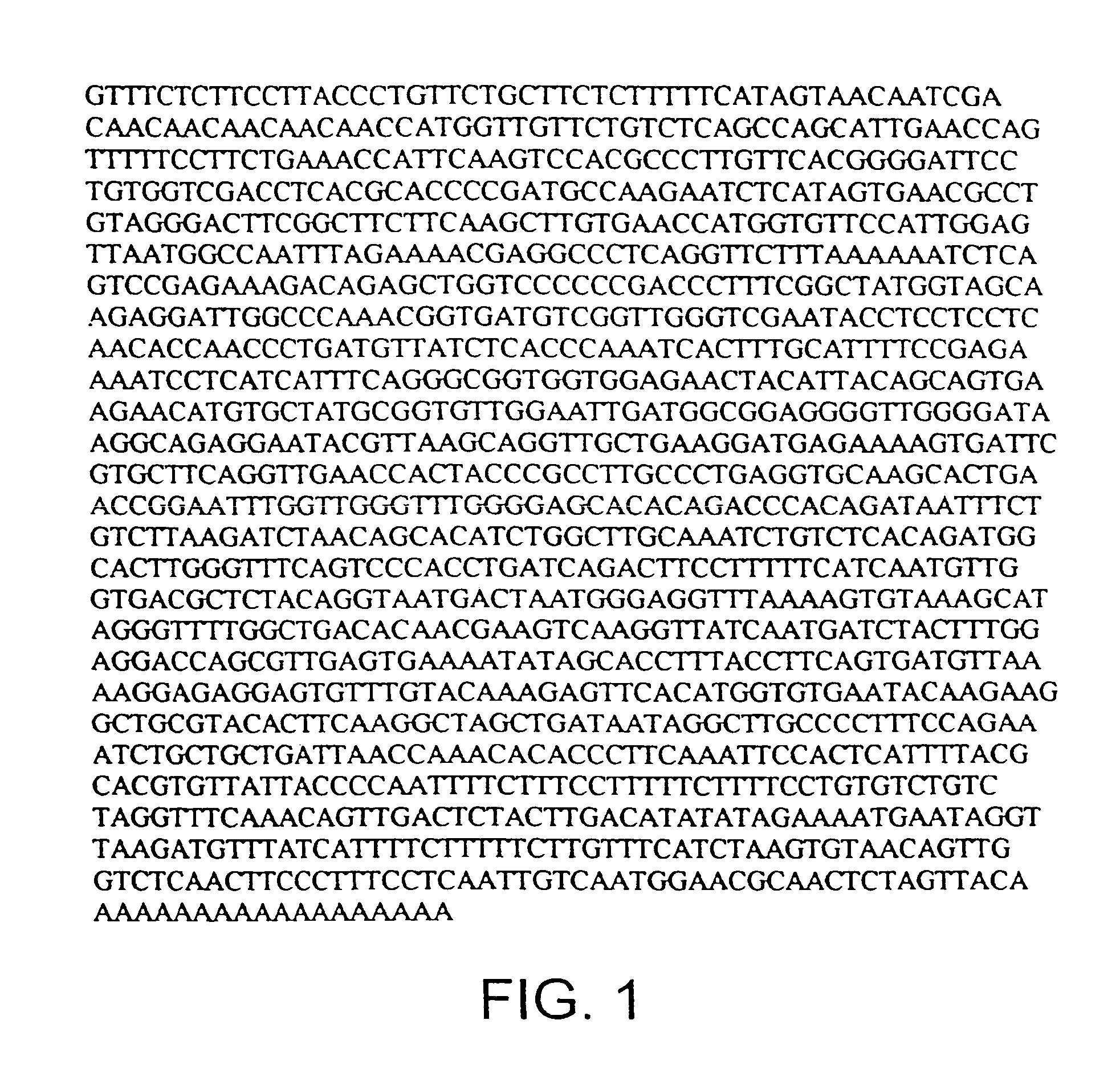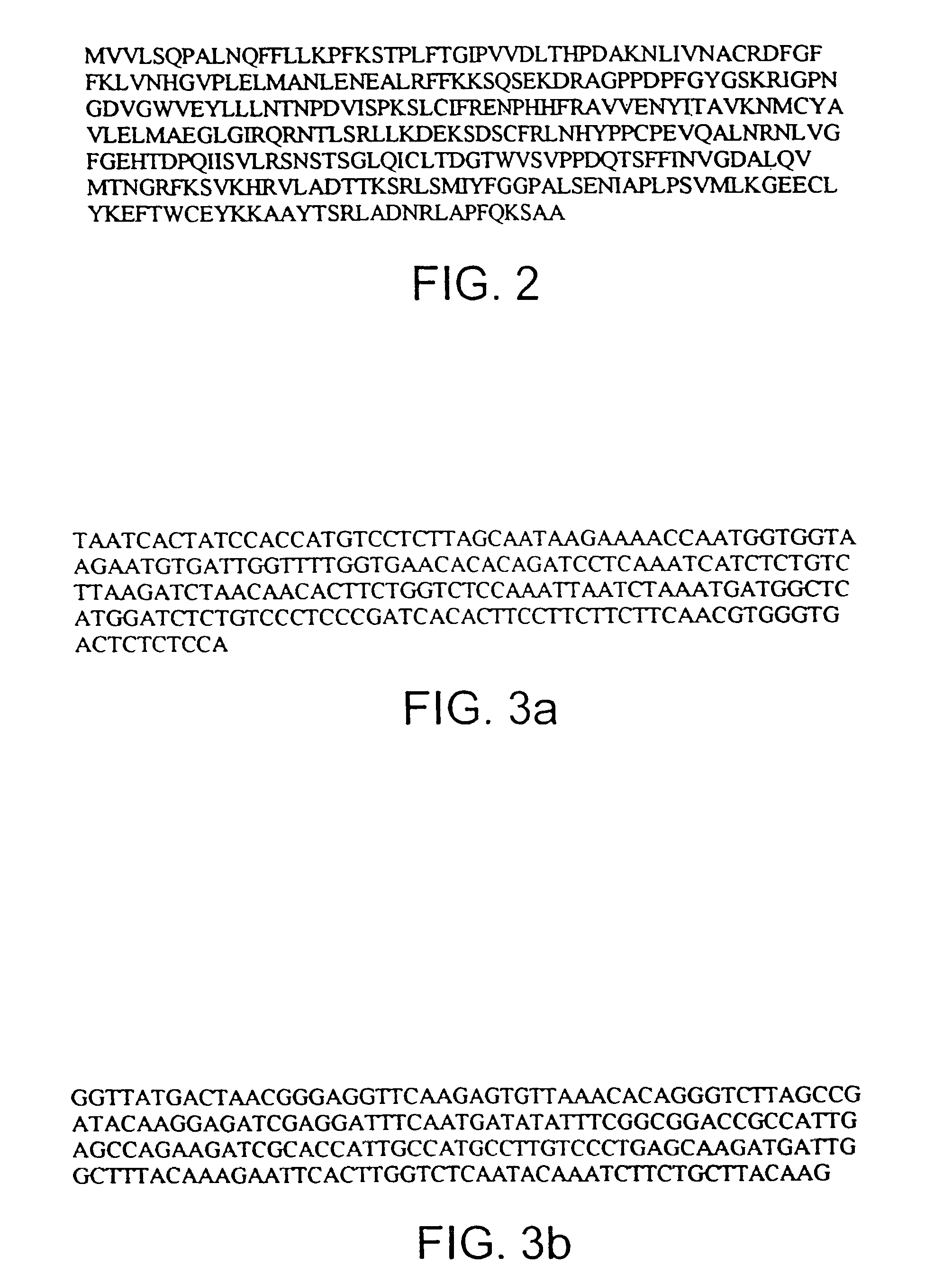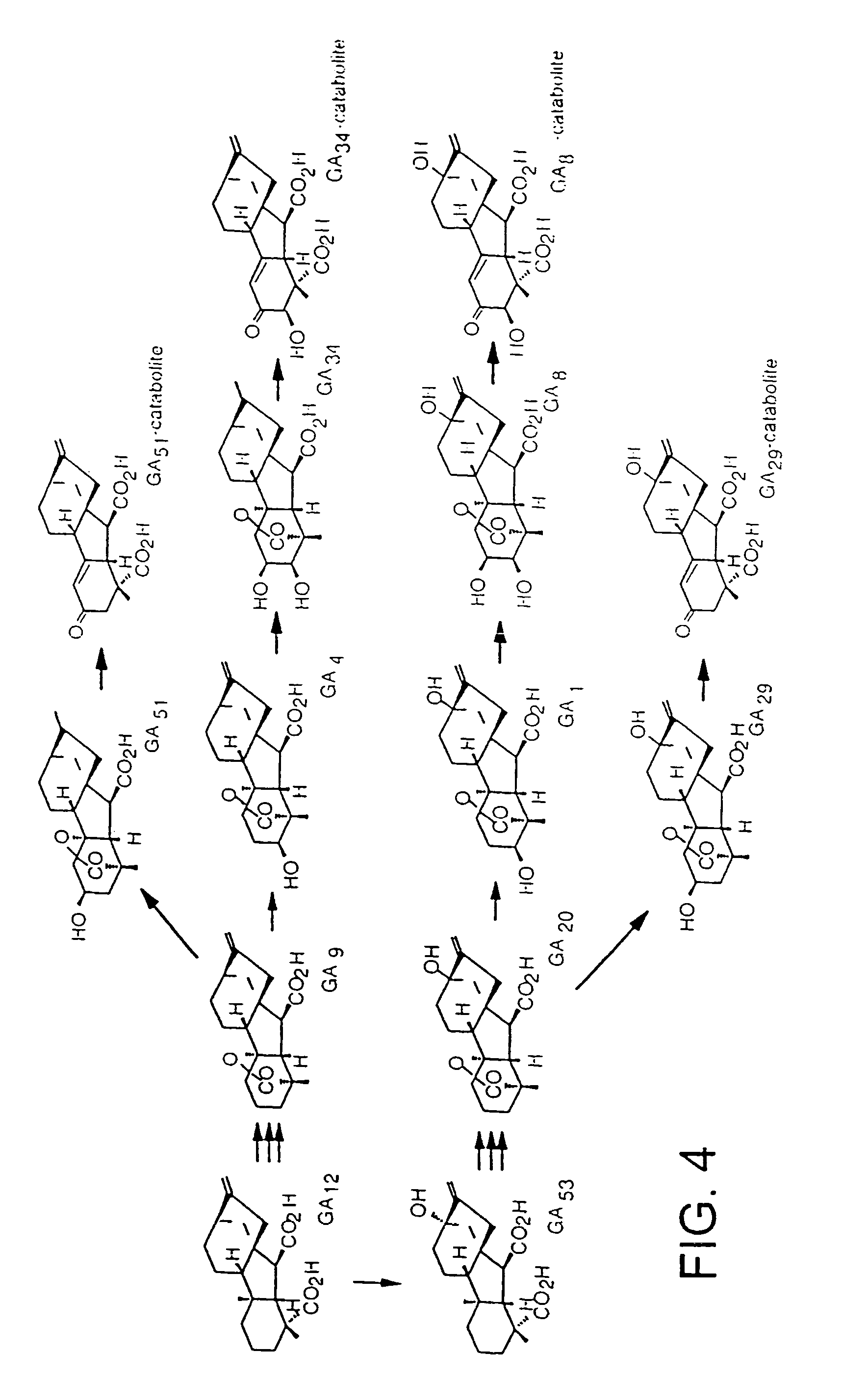Gibberellin 2-oxidase
a technology of gibberellin and oxidase, which is applied in the field of enzymology, can solve the problems of difficult restriction of application to the target plant organs, difficult to grow other crops following a treated crop, and high labor intensity of precise targeting of growth-regulator applications, so as to improve fruit set and growth, reduce turnover, and increase concentration
- Summary
- Abstract
- Description
- Claims
- Application Information
AI Technical Summary
Benefits of technology
Problems solved by technology
Method used
Image
Examples
example 1
Isolation of cDNA Clone Encoding GA 2β-hydroxylase from Phaseolus coccineus
[0068]A cDNA clone encoding a GA 2β-hydroxylase was isolated from Phaseolus coccineus embryos by screening a cDNA library for expression of functional enzyme as follows. RNA was extracted from the cotyledons of mature Phaseolus coccineus seeds, according to Dekker et al. (1989). Poly (A)+ mRNA was purified by chromatography on oligo(dT) cellulose. cDNA was synthesized from 5 μg of poly(A)+ mRNA using a directional cDNA synthesis kit (λ-ZAP II cDNA synthesis kit, Stratagene). The cDNA was ligated into λ-ZAP II arms, packaged using Gigapack Gold III (Stratagene) and 1×106 recombinant clones amplified according to the manufacturer's instructions.
[0069]A phagemid stock was prepared from the Phaseolus coccineus cDNA library (1×109 pfu) according to the manufacturer's in vivo excision protocol (Stratagene). For the primary screen, E. coli SOLR were infected with the phagemid stock according to the manufacturer's i...
example 2
Assays of GA 2-oxidase Activity
[0071]GA 2β-hydroxylase activity was determined by measuring the release of 3H2O from a 2β tritiated GA substrate, as described by Smith and MacMillan (Smith, V. A., and MacMillan, J. in J. Plant Growth Regulation 2 251-264 (1984)). The bacterial lysate (90 μl) was incubated with [1,2-3H2]GA4 or [2,3-3H2]GA9 (ca. 50000 dpm), in the presence of 4 mM 2-oxoglutarate, 0.5 mM Fe(II)SO4, 4 MM ascorbate, 4 mM DTT, 1 mg / ml catalase, 2 mg / ml BSA, in a final reaction volume of 100 μl. The mixture was incubated at 30° C. for 60 min. The tritiated GAs were removed by the addition of 1 ml of activated charcoal (5% w / v) and subsequent centrifugation for 5 min in a microfuge. Aliquots (0.5 ml) of the supernatant were mixed with 2 ml scintillation fluid and the radioactivity determined by scintillation counting.
[0072]In order to confirm the function of the cDNA expression products, bacterial lysate was incubated with [17-14C]GAs in the presence of cofactors, as descri...
example 3
Cloning of cDNAs Encoding GA 2-oxidase from Arabidopsis thaliana
[0073]The predicted protein sequence of clone 2B27 was used to search the Genomic Survey Sequences database at the National Centre for Biological Information (ncbi.nlm.nih.gov) using the TblastN program. Two Arabidopsis genomic sequences, T3M9-Sp6 and T24E24TF, demonstrated high amino acid sequence identity with the 2B27 sequence. Oligonucleotide primers were designed based on the T3M9-Sp6 genomic sequences:
[0074]
(SEQ ID NO:11)5′-TAATCACTATCCACCATGTC-3′(sense),(SEQ ID NO:12)5′-TGGAGAGAGTCACCCACGTT(antisense),
[0075]
(SEQ ID NO:13)5′-GGTTATGACTAACGGGAGGT-3′(sense),(SEQ ID NO:14)5′-CTTGTAAGCAGAAGATTTGT-3′(antisense),
and used in PCR reactions with Arabidopsis genomic DNA as a template. The PCR reactions consisted of 200 ng of genomic DNA, 1×PCR buffer, 1.5 mM MgCl2, 200 μM deoxynucleoside triphosphates, 1 μM of each primer and 2 units of Taq DNA polymerase (Promega). The reactions were heated to 94° C. for 3 min then 35 cyc...
PUM
| Property | Measurement | Unit |
|---|---|---|
| volume | aaaaa | aaaaa |
| pH | aaaaa | aaaaa |
| pH | aaaaa | aaaaa |
Abstract
Description
Claims
Application Information
 Login to View More
Login to View More - R&D
- Intellectual Property
- Life Sciences
- Materials
- Tech Scout
- Unparalleled Data Quality
- Higher Quality Content
- 60% Fewer Hallucinations
Browse by: Latest US Patents, China's latest patents, Technical Efficacy Thesaurus, Application Domain, Technology Topic, Popular Technical Reports.
© 2025 PatSnap. All rights reserved.Legal|Privacy policy|Modern Slavery Act Transparency Statement|Sitemap|About US| Contact US: help@patsnap.com



